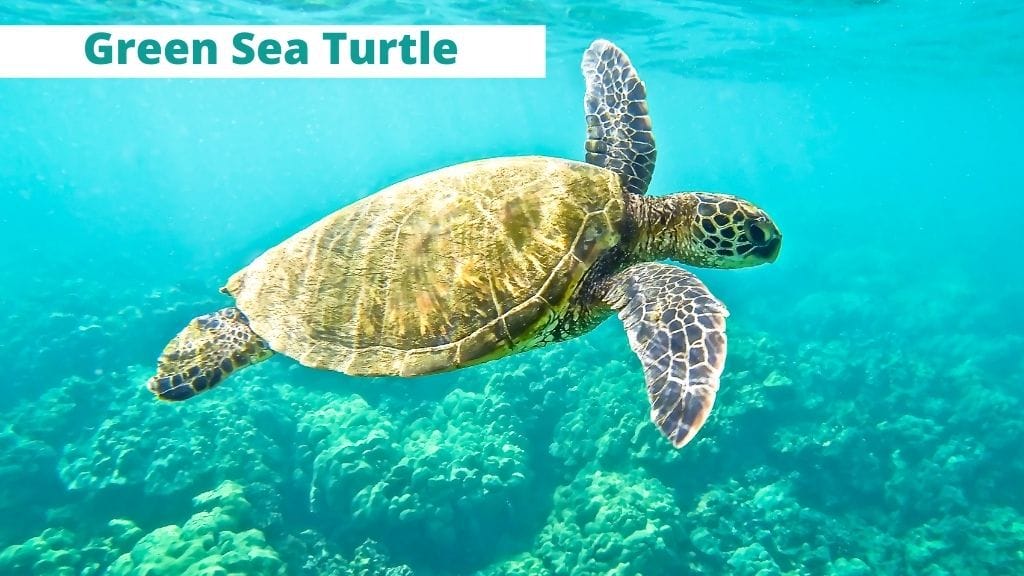Chelonia mydas (Green Sea Turtle)
Home > Turtle Database > Chelonia mydas (Green Sea Turtle)

Chelonia mydas, commonly known as the Green Sea Turtle, is a large marine reptile recognized for its unique greenish-colored fat. This species is known for its long migrations and vital role in maintaining the health of marine ecosystems.
Native To These Regions
Azores (Portugal), Baja California (Mexico), Canary Islands (Spain), Coastal Ecuador (Ecuador), Florida (USA), Galápagos (Ecuador), Great Barrier Reef (Australia), Hawaii (USA), Madeira (Portugal), New South Wales (Australia), Northern Territory (Australia), Okinawa (Japan), Queensland (Australia), Ryukyu Islands (Japan), South Australia (Australia), Tasmania (Australia), Victoria (Australia), Western Australia (Australia)Native Turtle Species Map – Find Turtles by Region
Scientific Classification
- Kingdom: Animalia
- Phylum: Chordata
- Class: Reptilia
- Order: Testudines
- Family: Cheloniidae
- Genus: Chelonia
- Species: Chelonia mydas
Common Names
- Green Sea Turtle
- Green Turtle
- Black Sea Turtle (specific populations)
- Pacific green turtle
This Hilarious Turtle Book Might Know Your Pet Better Than You Do
Let’s be real—most turtle care guides feel like reading a textbook written by a sleep-deprived zookeeper.
This one’s not that.
Told from the snarky point of view of a grumpy, judgmental turtle, 21 Turtle Truths You’ll Never Read in a Care Guide is packed with sarcasm, sass, and surprisingly useful insights.
And hey—you don’t have to commit to the whole thing just yet.
Grab 2 free truths from the ebook and get a taste of what your turtle really thinks about your setup, your food choices, and that weird plastic palm tree.
It’s funny, it’s honest, and if you’ve ever owned a turtle who glares at you like you’re the problem—you’ll feel seen.
Identification
Description:
Green Sea Turtles are large, with a carapace length that can reach up to 1.5 meters. The carapace is smooth, with shades ranging from olive to brown, often with darker mottling. Unlike some other sea turtles, the Green Sea Turtle’s head is relatively small compared to its body, and it has a single pair of prefrontal scales.
Sexual Dimorphism:
Males are typically smaller than females but have longer tails and larger claws. Females tend to have shorter tails and smaller claws, adapted for digging nests.
Check more turtles from the Chelonia genus
Native Origin and Distribution
Geographical Range:
Chelonia mydas can be found in tropical and subtropical oceans worldwide. Major nesting grounds include the Caribbean, Southeast Asia, the Indian Ocean, and the Pacific Islands.
Preferred Habitat
Green Sea Turtles prefer coastal habitats, such as sandy beaches for nesting, and seagrass beds or coral reefs for feeding. They are primarily found in shallow, warm waters.
Behavior
Feeding Habits:
Primarily herbivorous, Green Sea Turtles feed on seagrass and algae, contributing to the health of seagrass beds. Juveniles, however, may consume invertebrates such as jellyfish and sponges.
Predators:
Eggs and hatchlings are vulnerable to predation by birds, crabs, and mammals. Adult Green Sea Turtles have few natural predators, with large sharks, particularly tiger sharks, being the primary threat.
Reproduction
Breeding Season:
Green Sea Turtles breed every 2 to 4 years, typically during the warmer months, depending on the region.
Reproductive Method:
Females return to the beaches where they were born to lay eggs, digging nests in the sand to deposit clutches of about 100-200 eggs. Incubation lasts about 60 days, after which hatchlings emerge and make their way to the sea.
Conservation
Extinction Status:
Green Sea Turtles are currently listed as Endangered on the IUCN Red List.
Threats:
Threats include habitat loss, illegal poaching for their meat and eggs, accidental bycatch in fishing gear, pollution, and climate change affecting nesting sites.
Conservation Measures:
Efforts to conserve Green Sea Turtles include legal protection, beach monitoring, nest relocation, and the reduction of bycatch through modified fishing practices. Marine protected areas have also been established to safeguard critical habitats.
Economic Importance
Green Sea Turtles have significant cultural and economic value, particularly in coastal communities where they are revered. However, their exploitation for meat, eggs, and shells has also led to overharvesting.
Interesting Facts
- Green Sea Turtles can live up to 80 years in the wild.
- They are known for their long migrations, with some individuals traveling thousands of miles between feeding and nesting sites.
- The green color of their fat, which gives them their name, is due to their herbivorous diet.

About Author
Muntaseer Rahman started keeping pet turtles back in 2013. He also owns the largest Turtle & Tortoise Facebook community in Bangladesh. These days he is mostly active on Facebook.












